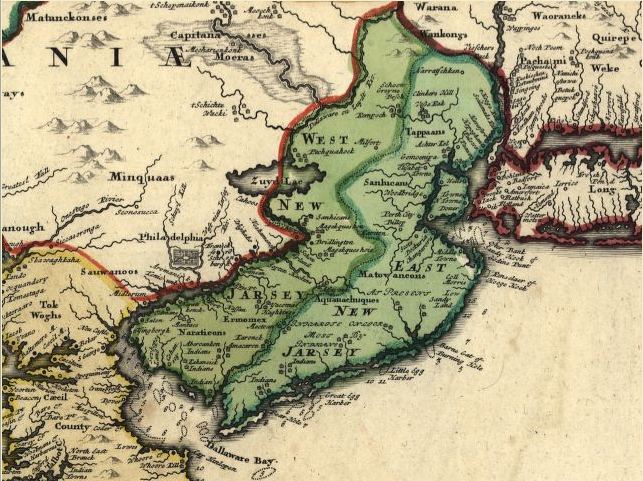Capital Not specified Established 1674 Currency Pound sterling | Languages English Disestablished 1702 Founded 1674 | |
 | ||
Government Constitutional monarchy | ||
West jersey rs 3 s
West Jersey and East Jersey were two distinct parts of the Province of New Jersey. The political division existed for 28 years, between 1674 and 1702. Determination of an exact location for a border between West Jersey and East Jersey was often a matter of dispute.
Contents
- West jersey rs 3 s
- West jersey football league lenape at rancocas valley oct 7 2016 2nd half part 2
- Background
- Constitution
- References
West jersey football league lenape at rancocas valley oct 7 2016 2nd half part 2
Background
The Delaware Valley had been inhabited by the Lenape (or Delaware) Indians prior to exploration and settlement starting around 1609 by the Dutch, Swedish and English. The Dutch West India Company had established one or two Delaware River settlements but by the late 1620s had moved most of their inhabitants to Manhattan which became the center of New Netherlands.
The development of the colony of New Sweden in the lower Delaware began in 1638. Most of the Swedish population was on the west side of the Delaware, but after the New Netherlands' Fort Nassau was re-established to challenge the Swedes, Fort Nya Elfsborg was established in present-day Salem County. Fort Nya Elfsborg was located between present day Salem and Alloway Creek. The New Sweden colony established two primary settlements in New Jersey: Sveaborg, now Swedesboro and Nya Stockholm, now Bridgeport. Trinity Church, located in Swedesboro, was the site of the Church of Sweden for the area.
The Dutch defeated New Sweden in 1655. Settlement of the West Jersey area by Europeans was thin until the English conquest in 1664. Beginning in the late 1670s Quakers settled in great numbers first in present-day Salem County and then in Burlington which became the capital of West Jersey.
Before 1674 land surveyors for New Jersey considered it as a hundred and partitioned it into Tenths. West Jersey comprised five of the tenths. But demarcation of the boundaries awaited settlement, the quitrents the settlers would pay, and the land surveying the money would purchase. Thus it took years and multiple surveys to settle boundary disputes. Burlington County was formed on 17 May 1694 by combining "the first and second Tenths." But at least three expensive surveys occurred to define just its northern extent. Richard Tindall was surveyor-general of Fenwick's Colony, the fifth Tenth.
